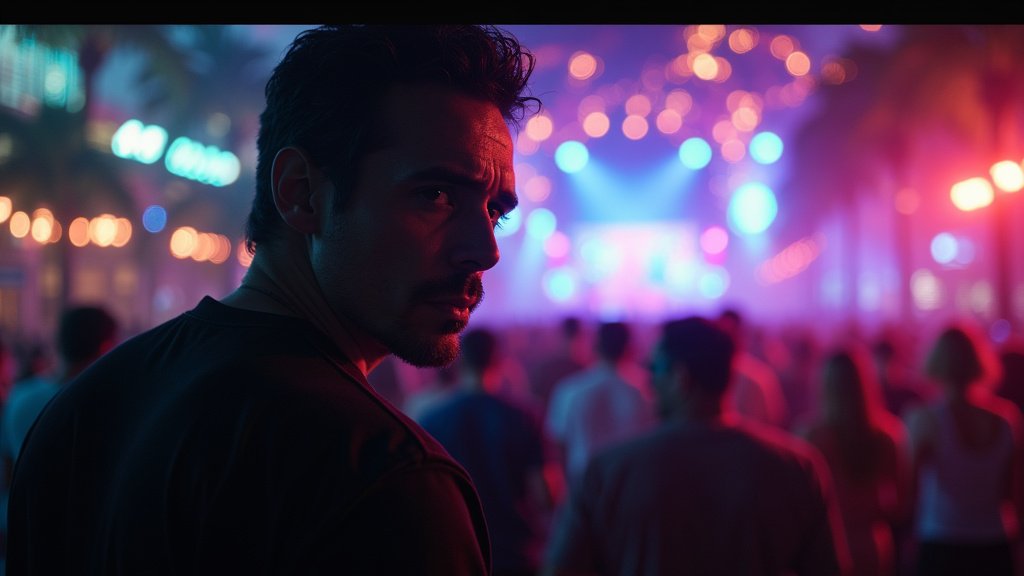Miami Beach, FL – The Miami Beach Classical Music Festival (MMF) is currently offering audiences a deeply engaging experience, placing them “in the midst of the music” through innovative performances. Central to this new approach is a sophisticated, permanently installed projection mapping system located within the opulent ballroom of Temple Emanu-El, a landmark synagogue dating back to 1948, strategically situated at the intersection of 17th Street and Washington Avenue in Miami Beach.
A New Era for Classical Performance
This integration of cutting-edge visual technology with live classical music and opera represents a significant stride in how these traditional art forms are presented. The goal, according to festival organizers and venue management, is to create an “immersive” environment that transcends the conventional concert hall experience, actively merging sound and sight to captivate attendees. The projection mapping system allows for dynamic, large-scale visual backdrops and effects that can synchronize with the musical performances, transforming the physical space of the ballroom.
The deployment of this technology was made possible through substantial public investment. Funding totaling $1.5 million was allocated from the City of Miami Beach’s $439 million General Obligation Bond program, which was passed by voters in 2018. This bond initiative aimed to fund various capital improvement projects across the city, and this particular allocation underscores a municipal commitment to investing in cultural infrastructure and audience development.
Technology as an Audience Catalyst
The explicit aim behind this significant technological investment is to attract new concertgoers to classical music and opera. By presenting these art forms in a fresh, technologically enhanced format, organizers hope to appeal to younger and more diverse audiences who may be less familiar with or intimidated by traditional concert settings. The fusion of live performance with dynamic visual arts and technology is designed to make the experience more accessible, engaging, and relevant.
This strategic use of technology is a response to broader trends in the arts world, where organizations are increasingly seeking innovative ways to maintain relevance and build sustainable audiences in a competitive entertainment landscape. The “immersive” element is key, offering a multi-sensory experience that is distinct from simply listening to a recording or watching a standard performance.
Beyond the Festival Stage
The impact of the new projection mapping system extends beyond the duration of the Miami Beach Classical Music Festival. Ricardo Gil, the general manager of Emanu-El Luxury Venue, the entity responsible for managing private events held at Temple Emanu-El, highlighted the broader appeal of the technology.
According to Mr. Gil, the state-of-the-art visual capabilities have already begun to attract a range of clients seeking unique event spaces. Interest has been noted from planners organizing upcoming bar mitzvahs, as well as from various corporate clients. This indicates that the public investment is facilitating dual-purpose use of the venue, serving both high-profile cultural events like the festival and generating revenue through private bookings.
Furthermore, the Miami Music Festival (MMF) itself intends to utilize the Temple Emanu-El venue for performances scheduled outside of the main summer festival season. This expanded usage ensures that the projection mapping system and the renovated space will be active throughout the year, maximizing the return on the city’s investment and providing consistent cultural programming options for residents and visitors.
Community Investment and Future Prospects
The $1.5 million allocation from the 2018 General Obligation Bond represents a tangible investment by the City of Miami Beach in its cultural landscape and its commitment to fostering innovation in the arts. The success of the “immersive” performances at the current Miami Beach Classical Music Festival will likely serve as a case study for how technology can be leveraged to enhance traditional art forms and attract new patrons.
The permanent installation of the system at Temple Emanu-El ensures its availability for years to come, positioning the venue as a unique location capable of hosting events that seamlessly blend performance and visual spectacle. As Mr. Gil’s comments suggest, this infrastructure not only benefits the arts community but also enhances the venue’s appeal for a variety of commercial and private functions, potentially creating a self-sustaining model for maintaining the technology and the historic space.
The ongoing use of the venue by MMF outside of the festival season further solidifies Temple Emanu-El’s role as a significant cultural hub in Miami Beach. The intersection of 17th Street and Washington Avenue is now home to a venue equipped to host performances that push the boundaries of presentation, ensuring that classical music and other events can be experienced in dynamic and unforgettable ways, truly placing audiences “in the midst of the music” and the visuals.





